- Blogs
- Industry Insights
- What is the future of WordPress in 2024 and beyond?
Industry Insights / 12 min read
What is the future of WordPress in 2024 and beyond?

Turning 20 earlier this year, what started as a mission to make the web a better place has become one of the world’s most prevalent web development platforms, with a thriving community constantly pushing it forward. But as we look upon a past that has powered a good chunk of the internet for two decades, it’s important to also keep track of current developments and the future it may lead to for WordPress.
That’s why, in this article, we’ll review the current state of WordPress to understand what the future may hold for the platform in 2024 and beyond.
Key takeaways
- More WordPress plugins like Divi and Uncanny Automator are integrating AI into their functions.
- WooCommerce powers over a third of worldwide ecommerce sites and nearly 9% of all sites.
- Performance for translated sites will likely improve in the future thanks to Performant Translations.
- More and more enterprises are moving to headless WordPress as the field continues to evolve.
- The WordPress project is investing in making migrations from other CMS to WordPress easier.
10 WordPress trends to expect in the following years
#1 More AI integration
With artificial intelligence becoming increasingly present in everyday life, it’s unsurprising that many developers are also looking for ways to integrate AI into WordPress.
One of the main players driving AI implementation forward is WordPress’s co-founder Matt Mullenweg. Mullenweg is also the founder and CEO of Automattic, which owns WordPress.com, the Jetpack plugin, and the journaling app Day One.
Jetpack already has an AI writing assistant that helps you generate new content, summarize articles, and more. The AI Assistant is activated by default as a block in WordPress’s Gutenberg editor, but the free Jetpack version only allows 20 prompts per month. For unlimited prompts, you need to pay $8.33 per month for Jetpack AI.
But Jetpack is far from the only WordPress plugin that provides AI assistance. Other plugins with AI capabilities include:
- Divi AI. Auto-generates images and text, learns from your content to propose on-brand new content, upscales images, and more.
- Rank Math. AI-powered dynamic SEO optimizations.
- AI Engine. Content generation, translations, ChatGPT-style chatbots, and more.
- Uncanny Automator. Uncanny Automator connects your site with dozens of plugins and third-party services to help you automate tasks.
The official WordPress project is also experimenting with AI. In his State of the Word speech, Mullenweg revealed that the team is experimenting with combining Playground and natural language to create blueprints for WordPress sites based on user prompts. He showcased asking an AI to generate an ecommerce WordPress site with SEO improvements out of the box.
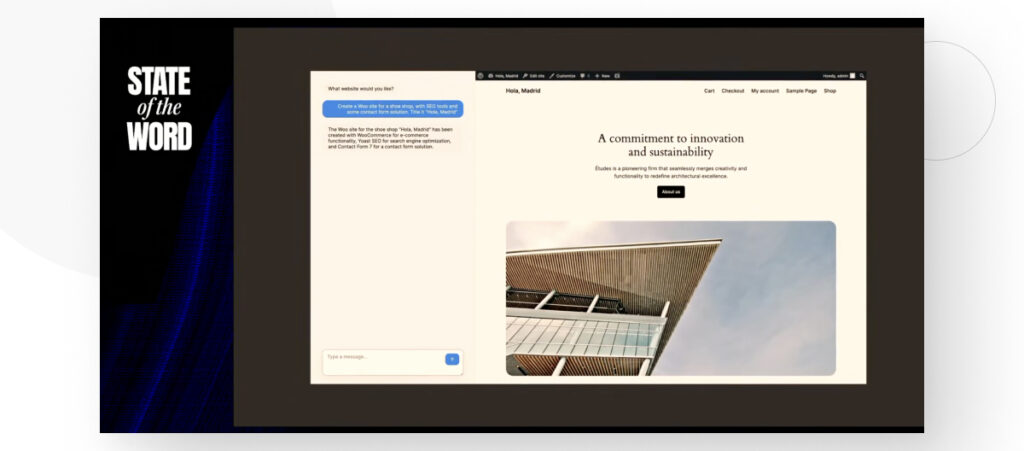
This application is still in early development but could be important in the future.
#2 Consistently high CMS market share
Over the past decade, WordPress has become the undisputed most popular CMS in the world. According to W3 Technology Surveys, WordPress powered 15.8% of all websites in 2012, nearly tripling to 43.1% by late 2023.
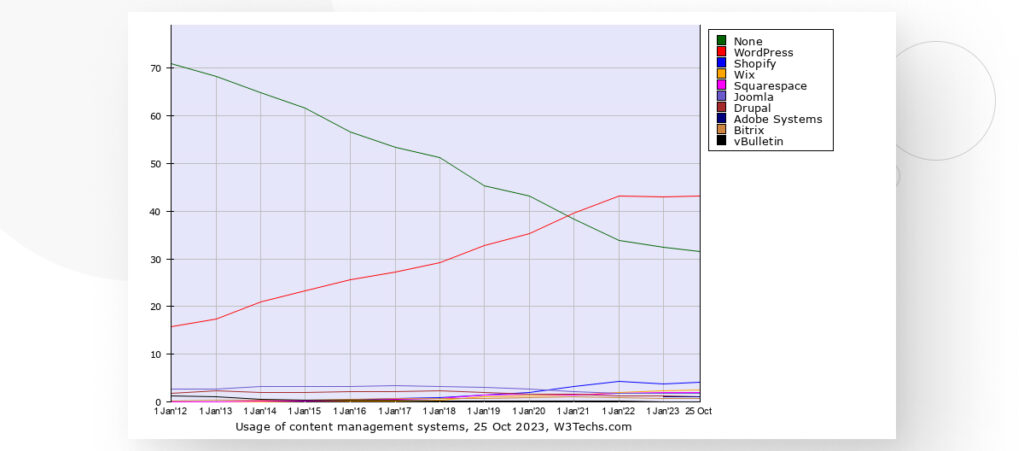
In the same period, WordPress’s CMS market share has grown from 54.3% to 63.0%, a slight decrease from its peak in 2022 (65.2%). That means that, among the websites built with a known CMS, WordPress currently powers 63% of them.
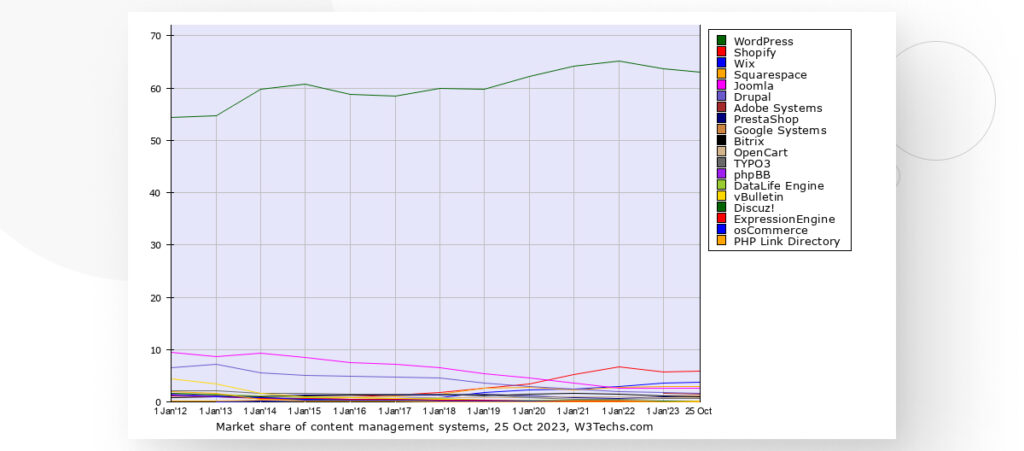
From 2012 to 2023, new CMSs appeared, and older ones other than WordPress remained. Joomla, Drupal, Squarespace, and Bitrix are the only ones on the list that existed in 2012, with Squarespace being the only one that has gained significant ground in the CMS market since.
New competitors emerged in the past decade, too, most notably Shopify, which stands as the second highest CMS market share in 2023 (5.9%).
Given WordPress’s growth and steady performance over the past years, the most likely outcome is that it will continue to be the world’s most popular CMS. Its plugin and theme ecosystem, flexibility, user-friendliness, and developer availability will ensure its relevance for years to come.
#3 Ecommerce growth
The ecommerce industry has become essential to global retail over the past decade, generating an estimated USD 5.2 trillion in 2022. It is expected to generate over 8 trillion USD by 2026.
Despite not being built for ecommerce, WordPress’s flexibility and plugin ecosystem allow developers to create high-performing ecommerce sites with plugins like WooCommerce. In fact, in 2023 WooCommerce was the worldwide leader among ecommerce software platforms, with 39% of the global market share. Shopify is the leader in the US, with a 28% market share.

WooCommerce currently powers 8.9% of all worldwide websites, powering more ecommerce sites than entire CMSs like Drupal and Joomla power websites of all kinds.
In the following years, WooCommerce should be able to at least maintain or even increase its ecommerce platform market share, but other WordPress ecommerce plugins could become more relevant, too.
For example, niche solutions like Easy Digital Downloads and MemberPress are excellent for sites that don’t need a full ecommerce marketplace but still need a plugin that streamlines digital transactions.
#4 Better performance for translated WordPress sites
In a July 2023 performance analysis, WordPress core developers determined that translated sites can be significantly slower than their non-translated counterparts. Depending on the site’s themes and plugins, the median loading time for a localized site can be up to 50% slower than for non-localized ones.
They also identified multiple potential solutions to improve performance on localized sites, including using lightweight MO parsers, caching translations in the object cache or APCu, using the native PHP gettext extension, and using .php files rather than the .mo files more commonly used to translate sites.
Based on this report, the WordPress Performance Team launched the Performant Translations plugin. Data provided by the developers shows that with this plugin, translated pages now load almost as fast as original language ones instead of significantly slower.
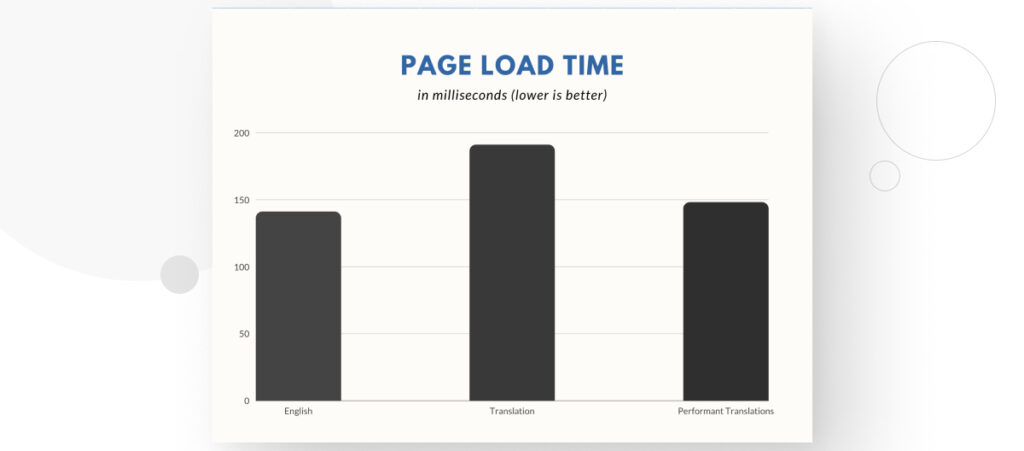
By default, the plugin converts existing .mo files into .php files, which are faster to parse, and from that moment on, it only loads the translations from the .php files. This significantly speeds up translated sites.
Performant Translations is part of an ongoing effort to speed up performance in translated WordPress sites, and the Performance Team intends to eventually merge the plugin’s features into the WordPress core. Currently, it has over 2,000 active installations and only positive reviews.
#5 Increased headless WordPress adoption
As headless development becomes more prevalent due to the flexibility it provides developers when choosing their frontend tools, WordPress has gradually joined the trend.
Headless WordPress is a variant of WordPress’ traditional, monolithic architecture that implements the principles of headless CMSs: separating the frontend and backend within the same CMS and integrating them through APIs. This approach uses the WordPress backend for content management and a different platform for the frontend.
The headless model opens up some interesting possibilities, such as using popular frontend frameworks like Next or Angular that retrieve and display content by making API calls to the WordPress backend content manager. Another potential use case is multi-platform apps that consume WordPress’s REST API to display content across various channels.
While monolithic CMSs like the traditional WordPress core still dominate the market, headless CMSs already have a significant market share despite their recency, comprising around 35% of the CMSs businesses use (graphic by Storyblok).
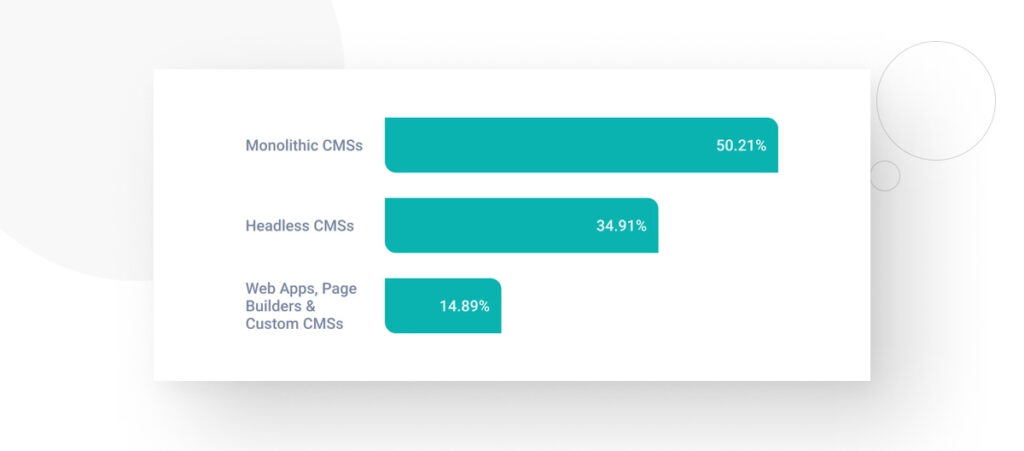
According to Storyblok’s 2022 poll, headless CMSs are especially popular among mid-size businesses and enterprises due to the scalability, security, and compatibility with the latest frontend frameworks the model provides. Participating companies that migrated to a headless CMS enjoyed the following benefits:
- 82.91% reported improving their ability to achieve goals related to time, budget, productivity, KPIs, and revenue or growth.
- 31.4% reported saving time in content and project management.
- 16.8% reported increased traffic to their sites.
- 14.2% reported increased ROI.
- 13.7% reported budget reductions in CMS maintenance.
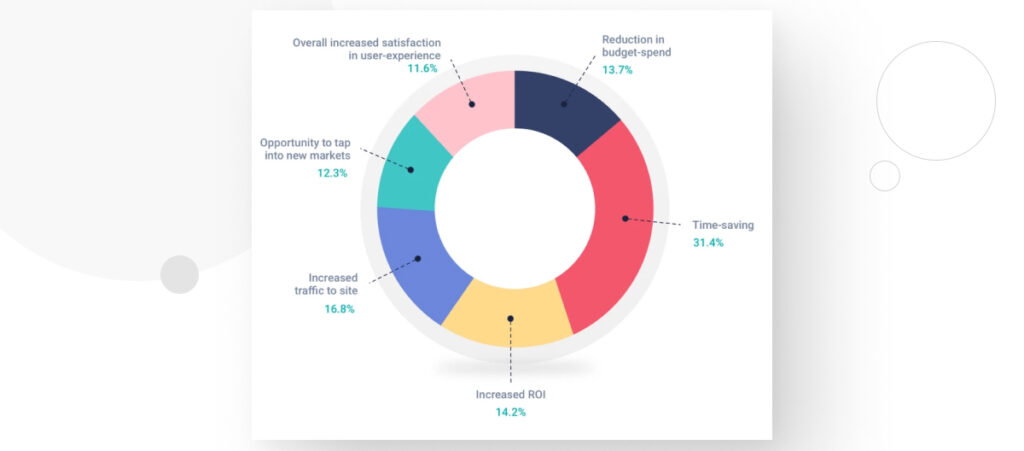
Are WordPress sites going headless?
While statistics for headless adoption in the WordPress ecosystem are harder to come by, some big names have recently migrated to the headless WordPress model, such as Al Jazeera and NASA, potentially signaling a shift towards headless at least in large enterprise sites.
Additionally, the headless plugin, integration, and hosting scene grew significantly in the past few years. With headless WordPress hosting solutions such as WordPress VIP, WPEngine’s Atlas, and Pantheon’s Front End Sites, the development community now has the infrastructure to build complex headless sites that meet enterprise needs.
As for plugins and integrations, what would have been impossible a few years back is now much easier to implement. This includes querying Gutenberg Blocks as data by extending the WPGraphQL plugin, making WooCommerce transactions by exposing its functionality to a GraphQL server, and enabling multilingual support with the GraphQL schema in headless sites.
We’ve also seen advancements in patterns for the frontend applications that interact with headless WordPress, such as WPEngine’s Faust.js headless framework, starter sets for headless WordPress and Next.js integrations, and even more niche solutions like WooCommerce and Nuxt.js.
While the headless WordPress space still has a long way to go, it’s clear that multiple players are heavily investing in moving the field forward. Still, implementing a headless WordPress site involves significant investment and technical expertise, meaning that most organizations will not have the means to do so. But they may not have the technical needs to justify it either, as most sites are more likely to benefit from a monolithic installation than a headless one.
Ultimately, headless WordPress seems to be here to stay, and many enterprise sites in the media, publishing, ecommerce, higher education, and tech industries would benefit from the multi-channel freedom it provides.
#6 A gradual but steady shift to JavaScript

We often associate WordPress with PHP since this server-side language powers most of the WordPress core. But for several years, the WordPress development team has set their sights on implementing more and more JavaScript when possible, exemplified by WordPress founder Matt Mullenweg’s 2015 State of the Word speech, where he asked WordPress developers to learn JavaScript deeply.
That’s because JavaScript does present some advantages over PHP in some cases. The most important is the potential to improve website performance by reducing server requests.
Since JavaScript implements client-side changes, you save the time and resources of requesting changes to the server and refreshing the page to see them in action. Instead, JavaScript allows you to make those changes in real-time, improving performance and user experience.
Due to this and other advantages, the WordPress team has slowly integrated more JavaScript into multiple WordPress functions, including:
- Gutenberg’s React components.
- Interacting with the WP-REST API using JSON, which reads, writes, and edits data using JavaScript.
- Calypso, the JavaScript-powered version of the WordPress admin dashboard.
And that’s without considering the fact that WordPress already has various built-in JavaScript libraries, like jQuery and Bakcbone.js, and many plugins and themes have always used JavaScript to create effects, insert content dynamically, etc. The WordPress core team intends to build upon these while implementing more JavaScript where they’d be the most effective.
But ultimately, PHP is not going anywhere soon. The WordPress core will continue to be PHP for the foreseeable future, even if JavaScript will play an increasingly more prominent role in the platform.
#7 Full Site Editing (FSE) will gain traction
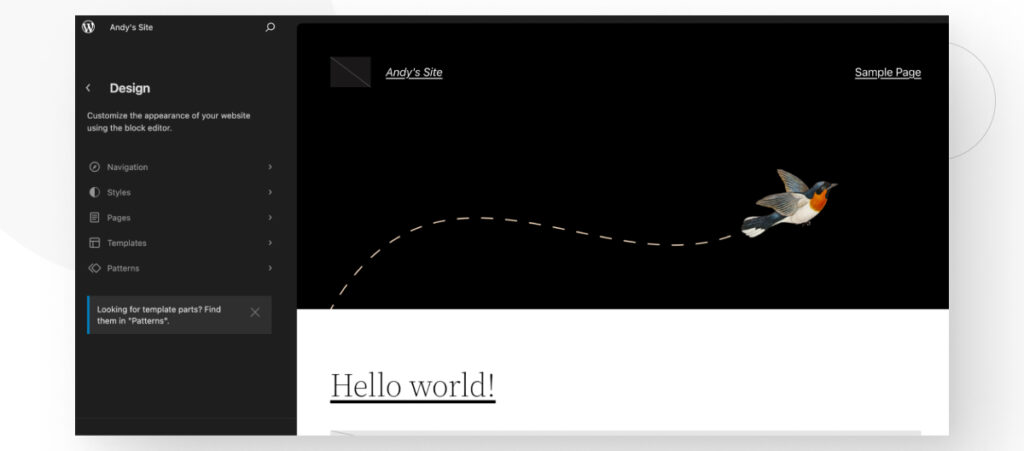
Full-Site Editing (FSE) was one of the main improvements added to WordPress 5.9 in January 2022. It’s an extension of the Gutenberg block editor, going beyond posts and pages to allow you to edit website elements like headers, footers, and navigation menus.
It effectively turns WordPress themes into block themes and acts as a page builder like Divi or Beaver Builder that’s built directly into the platform by default. This means it doesn’t require additional plugins or other integration measures to function.
FSE allows developers to edit sites without code in a What You See Is What You Get (WYSIWYG) interface, providing more granular control over the site’s design and greater integration with the block editor for a more consistent development experience.
So, what do these benefits mean for WordPress developers moving forward? As FSE features continue to evolve, it could influence developers and web designers in the following ways:
- Accelerating workflows for freelancers and agencies who need to meet strict deadlines.
- Making site editing more agile.
- Setting up repeatable client projects by creating customizable templates.
While still in beta, FSE looks very promising. Many development teams may incorporate it into their workflow as it evolves.
#8 Improved migration tools
WordPress’s Data Liberation initiative was one of the major pieces of 2023’s State of the Word speech. Mullenweg expressed the desire to steer the WordPress project towards more sophisticated migration tools.
In a world where some CMSs provide no export/import alternatives, the Data Liberation project aims to become an information hub with resources that help developers migrate sites from WordPress to WordPress and from other CMSs to WordPress. Guides include migration instructions for Drupal, Tumblr, Squarespace, HTML, and more.
The project will also prioritize making these migrations easier through first-party plugins, tools, and optimized workflows. The teams will focus on one-click migrations and improvements on the .wxr export format.
#9 Faster plugin clearance
As of December 2023, there is a 79-day delay for approving new plugins in the directory. To combat this, the official WordPress Plugins Team is accepting applications, with the goal of eventually ensuring that every plugin is reviewed and approved in 1 business day.
#10 Improved Gutenberg performance
Matías Ventura, Lead Architect of Gutenberg, also had a segment in 2023’s State of the Word. In it, he explained many of the advancements of the Gutenberg project, including performance improvements.
Ventura claimed that over October and November 2023, the team made the editor at least twice as fast. He also explained that WordPress 6.4 made the editor significantly faster, and the team expects that 6.5, scheduled for March 26, 2024, will make it even faster.
The future looks bright for WordPress
WordPress has been constantly evolving for over 20 years with no signs of slowing down or losing relevance. Based on what we can gather, 2024 and beyond will bring more AI integration, better performance for translated sites, more headless implementations, and much more.
In true WordPress fashion, the platform continues to adapt and play a significant role in modern web development, giving WordPress users more flexibility to create the websites they need.
If you found this post useful, read our blog for more WordPress insights and guides!
Related Articles

Business / 12 min read
Business / 12 min read
How to Take on More WordPress Development Projects While Maintaining Quality
As a digital agency that provides WordPress services, your job is to take on as many projects as possible while maintaining the highest quality. This is easier said than done…
Read More
Business / 9 min read
Business / 9 min read
How to Choose a WordPress Development Agency to Scale Your Projects?
When your agency starts to scale, you may decide that a big part of your expansion will be providing WordPress services. If that's the case but you don't have an…
Read More
Business / 7 min read
Business / 7 min read
How to Optimize Time and Resources in WordPress Projects
WordPress agencies need to optimize and human resources use in order for their services (development, QA, design, etc.) to be profitable. They need to plan these projects very thoroughly to…
Read More
Business / 11 min read
Business / 11 min read
How WordPress Outsourcing Can Help Scale Your Agency
WordPress development outsourcing is becoming more frequent and affordable every day, helping global digital agencies of all sizes scale their services without the long-term investment of hiring an in-house team.…
Read More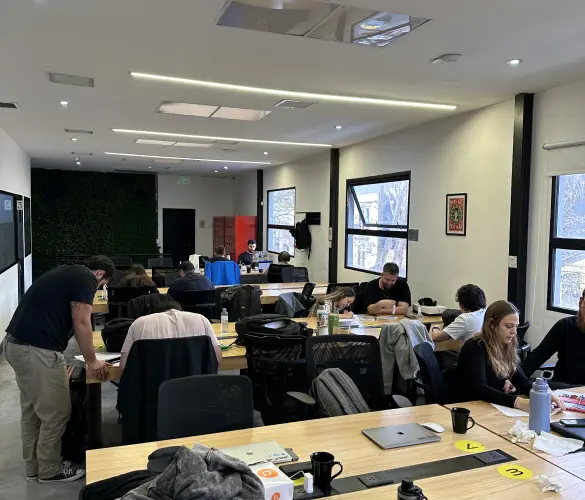
Business / 8 min read
Business / 8 min read
What Is a White Label WordPress Development Agency?
A white label WordPress development agency is a company of WordPress developers, QA analysts, and project managers who provide outsourced services to digital agencies that lack a development team. Importantly,…
Read More